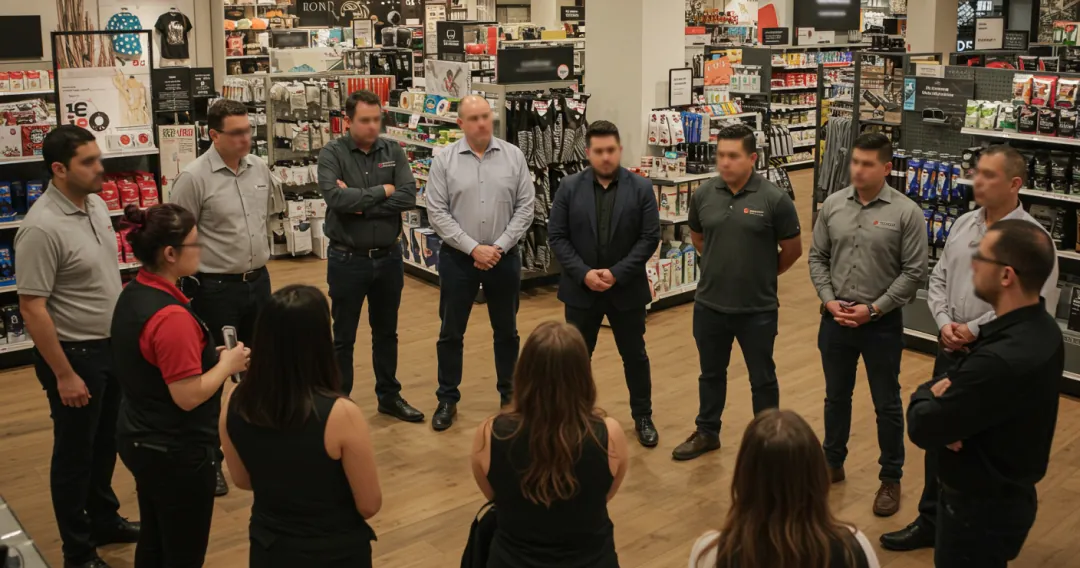This article explores how working across departments can enhance loss prevention efforts and protect valuable assets.
Understanding Cross-Departmental Collaboration in Security
Cross-departmental collaboration involves departments such as security, operations, finance, and human resources working together to share information and coordinate efforts. In loss prevention, this means that insights and data from one area can support decisions in another.
The idea is straightforward: no single department has all the answers. When information flows freely between teams, potential risks can be identified and addressed sooner. This cooperative approach is not just beneficial—it is essential for comprehensive asset protection.By pooling resources and expertise, companies can create a more effective defense against theft, fraud, and other security breaches.
Why Collaboration Matters in Loss Prevention
When departments work in silos, important clues about security vulnerabilities can be missed. Collaboration brings together different perspectives. The operations team might notice discrepancies in inventory levels, while human resources could be aware of employee issues that might lead to internal theft. Together, these insights form a complete picture of the organization’s security posture.
Cross-departmental collaboration also enhances the response to incidents. When a security breach is detected, coordinated efforts across teams ensure that all aspects of the incident are addressed promptly.
Practical Ways to Foster Collaboration
There are several practical strategies to encourage collaboration among departments. First, establishing regular interdepartmental meetings can help keep communication channels open. These meetings should focus on reviewing recent incidents, sharing insights from different departments, and discussing ways to improve overall security.
Creating shared digital dashboards is another effective strategy. When all departments have access to the same data, it becomes easier to identify trends and anomalies. For instance, a dashboard that integrates inventory data, cash flow reports, and security incident logs can highlight patterns that might otherwise go unnoticed.
Clear protocols for reporting and follow-up are also critical. Each department should understand its role in a security incident and know how to communicate with other teams. By defining responsibilities and ensuring that everyone is on the same page, organizations can reduce response times and minimize potential losses.
Overcoming Barriers to Collaboration
Overcoming barriers to cross-departmental collaboration is essential for effective loss prevention and asset protection. Here are key strategies to address common challenges:
Bridging Cultural Divides: Departments often have distinct cultures and priorities. For example, finance focuses on numbers and reports, while security deals with real-time incidents. Building mutual understanding and respect for each department’s expertise is crucial.
Integrating Data Systems: Different departments may use various systems to collect and manage data, leading to fragmented information. Implementing a centralized system where all relevant data is accessible can improve accuracy and ensure informed decision-making.
Providing Comprehensive Training: Training employees across departments on loss prevention basics and the importance of collaboration is vital. This training should cover recognizing warning signs, reporting protocols, and understanding each team’s role in overall security.

How ThinkLP Supports Cross-Departmental Collaboration
ThinkLP offers a platform designed to support loss prevention efforts through improved communication and data integration. The system is built to bring together information from various sources—such as surveillance data, incident reports, and financial records—into a centralized dashboard. This unified view allows different departments to access consistent, up-to-date information, making it easier to spot trends and coordinate responses.
For instance, ThinkLP’s platform can generate alerts based on predefined criteria, which are then shared across teams. When an alert is issued, security, operations, and finance teams receive the same notification, ensuring that everyone is aware of potential issues at the same time. This not only speeds up the response but also facilitates a coordinated effort to address the root cause of the problem.
Building a Culture of Collaborative Security
Encouraging cross-departmental collaboration goes beyond implementing technology and procedures—it requires a cultural shift within the organization. Leadership plays a key role in fostering an environment where teamwork is valued and where departments are encouraged to share insights without barriers.
Regular feedback sessions can help ensure that the collaboration process remains effective. These sessions provide an opportunity for teams to discuss what is working, identify any issues, and adjust their strategies as needed. Celebrating small wins and acknowledging the contributions of different teams can also reinforce the benefits of working together.
Another important factor is transparency. When departments understand how their contributions impact overall security, they are more likely to engage actively. Transparent communication builds trust and ensures that everyone is aligned in the common goal of protecting the organization’s assets.
Final Thoughts on Cross-Departmental Collaboration
As organizations face increasingly complex security challenges, the need for robust, integrated loss prevention strategies will only grow. The trend towards data-driven decision-making will further encourage teams to break down silos and work together more closely.
Continued investment in training, technology, and cultural development will help ensure that collaboration becomes a permanent and effective part of organizational strategy. Businesses that succeed in creating a collaborative environment will be better positioned to address emerging threats and maintain long-term security.
Explore ThinkLP’s Blog
Now that you know more about cross-departmental collaboration, you can find additional insights on loss prevention and safety intelligence on ThinkLP’s blog. The blog features articles, case studies, and industry insights that provide practical tips and strategies for improving your loss prevention efforts.
Request a Demo
If you are interested in how ThinkLP’s software can support your loss prevention initiatives, we invite you to request a demo. Their Loss & Safety Intelligence Platform is designed to integrate with your existing operations, helping you reduce risks and improve efficiency. Reach out today to learn how ThinkLP can assist your organization in optimizing its loss prevention strategy.


